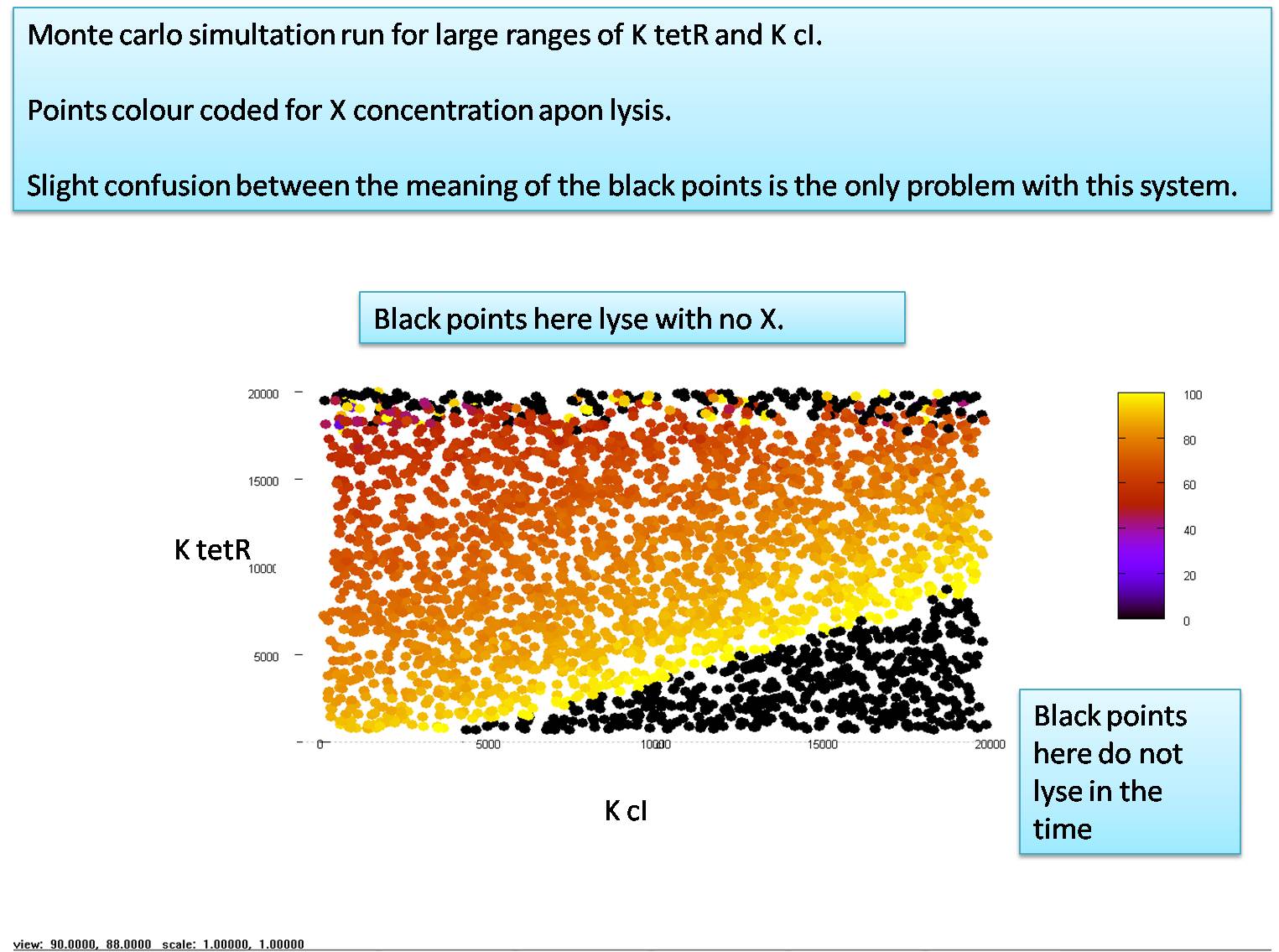Team:Aberdeen Scotland/parameters/invest 3
From 2009.igem.org
University of Aberdeen - Pico Plumber
Monte Carlo Simulations
To test how these values work in our model we utilised what is known as a "Monte Carlo Simulation". This works by running the entire simulation thousands of times, but each time the simulation runs the parameters are randomised. This allows us to easily take three parameters, for example KLacI, KTetR and KcI - and plot each of them on an axis of a three dimensional plot. Each time we run a simulation we randomly chose these three variables between the lower expected limit and the upper expected limit and plot a point in our 3D graph corresponding to the randomly chosen values. This point is then colored to show how the simulation worked. The final style we used was to plot a black point if the cell lysed before the input was added (by accidently triggering itself) or if the cell did not lyse in a given period (usually 9 hours). all simulations which exhibited cell lysis in the desired time frame were plotted in color, and the color is matched to the the amount of X that was produced - as a percentage of the maximum possible X. This is shown in the image below, which has the KLacI axis obscured for easier viewing.
Note that this simulation is run on a model that has LacI repression lifting and quorum sensing both modelled as on/off switches with 100% efficiency. We will see the full model and accompanying Monte Carlo simulations in the next section.
The two most interesting points to note here are the black areas. The area in the bottom right never lyses because of a combination of KTetR being too low and KcI being too high. This effect is caused because as KTetR is reduced Holin production turns on only at very low levels of TetR. If KcI is high then this means it takes a huge amount of cI to repress the production of TetR. This means that some TetR is stochastically produced which is then free to repress the production of Holin.
The upper black area is simply created because KTetR is so high that it takes so much TetR to repress Holin production that Holin is produced long before it should be.
We can also clearly see the colour scale showning exactly how much of the glue (molecule X) was present at the point of lysis.
 Back Back
|
Continue 
|
 "
"
